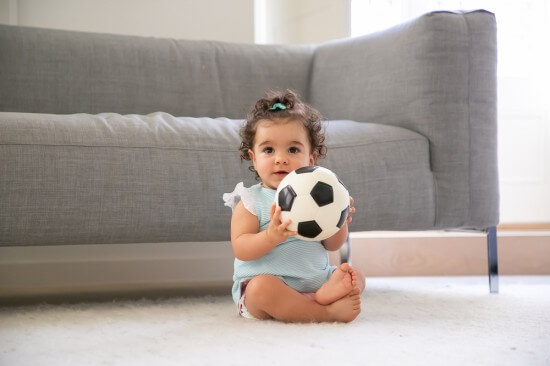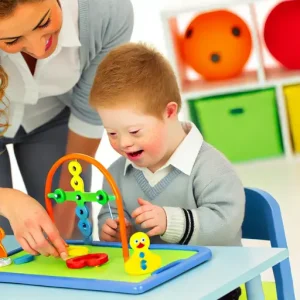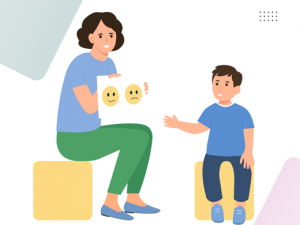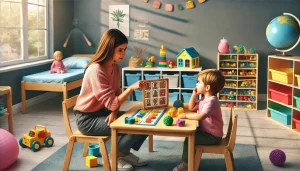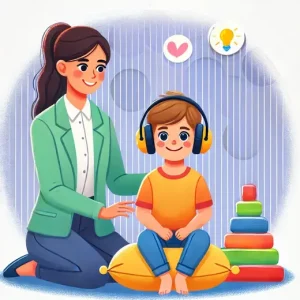Help Your Child Overcome Dysgraphia with Occupational Therapy
By Wellness Hub
Last Updated: July 2, 2024
Imagine your child sitting in class, pencil in hand, their brow furrowed in frustration. They’re not just dealing with messy handwriting—dysgraphia makes every word a mountain to climb. This condition stifles their ability to express thoughts on paper, setting them apart from their peers and chipping away at their confidence. However, there’s hope. Occupational therapy stands out as a beacon of effective treatment, offering children with dysgraphia the tools and strategies necessary to conquer their writing challenges. By empowering your child with the right support, you can transform their academic journey and boost their self-esteem.
Understanding Dysgraphia
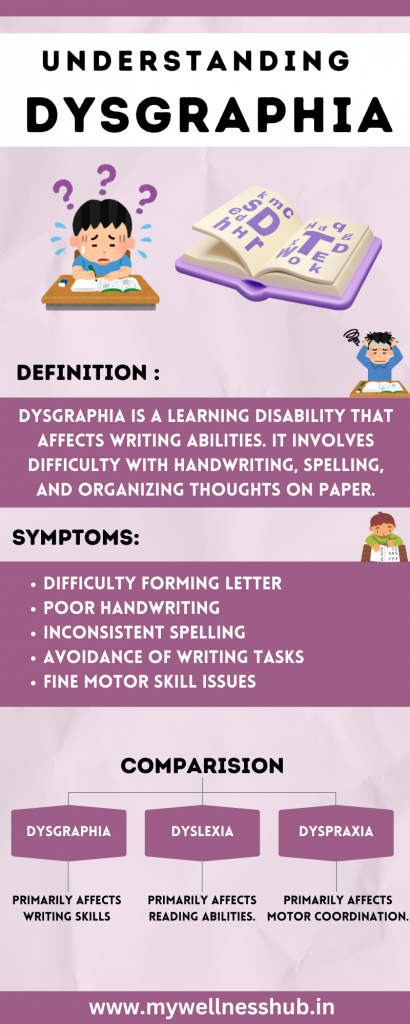
What is Dysgraphia?
Dysgraphia is a learning disability that primarily affects a child’s writing skills. Unlike other learning disabilities, dysgraphia specifically impacts the ability to write coherently and legibly. Children with dysgraphia often struggle with various aspects of writing, which can make school and daily activities particularly challenging.
Common symptoms of dysgraphia include:
- Poor Handwriting: Children with dysgraphia typically have handwriting that is difficult to read. Their letters may be unevenly spaced, written in different sizes, or poorly formed.
- Spelling Issues: Spelling can be inconsistent, with frequent mistakes that may not follow typical phonetic rules. This can make written communication hard to understand.
- Fine Motor Skill Difficulties: Many children with dysgraphia have trouble with tasks that require fine motor skills, such as holding a pencil correctly, tying shoelaces, or using scissors.
Difference Between Dysgraphia, Dyslexia, and Dyspraxia
Understanding the differences between dysgraphia, dyslexia, and dyspraxia can be key to finding the right treatment and support for your child.
- Dysgraphia vs. Dyslexia: While dysgraphia affects writing skills, dyslexia primarily impacts reading abilities. Children with dyslexia may have difficulty recognizing words, decoding new words, or reading fluently. It’s important to note that a child can have both dysgraphia and dyslexia, which can compound their challenges with written language.
- Dysgraphia vs. Dyspraxia: Dyspraxia, on the other hand, affects motor coordination. Children with dyspraxia may struggle with physical tasks that require coordination, such as riding a bike, playing sports, or even simple movements like brushing teeth. Although dyspraxia can impact writing, it does so from a motor coordination perspective rather than a processing issue as seen in dysgraphia.
The Role of Occupational Therapy in Treating Dysgraphia
Assessment and Individualized Planning
When it comes to treating dysgraphia, one of the first steps occupational therapists take is a comprehensive assessment. This involves observing your child’s writing patterns, motor skills, and overall handwriting abilities. By understanding the specific challenges your child faces, the therapist can develop a personalized treatment plan tailored to their unique needs.
An individualized plan ensures that the therapy is effective and targeted, addressing the particular difficulties your child encounters. This customized approach is essential because dysgraphia can manifest differently in each child, requiring a flexible and adaptive treatment strategy.
Improving Fine Motor Skills
Fine motor skill development is a critical component of occupational therapy for dysgraphia. Strengthening these skills can significantly enhance your child’s ability to write more clearly and comfortably. Therapists use a variety of activities and tools to help improve fine motor skills, such as:
- Pencil Grips: These can help children hold pencils correctly, reducing strain and improving control.
- Special Lined Paper: Paper with raised or highlighted lines can guide children in forming letters correctly, making their handwriting more legible.
Sensory Integration Techniques
Sensory integration plays a vital role in helping children with dysgraphia manage sensory sensitivities that impact their writing. Occupational therapists use various techniques to help children regulate the pressure they apply when writing, ensuring their handwriting is legible and consistent. For example:
- Weighted Pencils: These can help children who struggle to apply the right amount of pressure.
- Textured Writing Surfaces: Writing on different textures can help children become more aware of their movements and pressure.
Adaptive Tools and Technology
Adaptive tools and technology can be game-changers for children with dysgraphia. These tools bridge the gap between their writing challenges and successful written communication. Some examples include:
- Speech-to-Text Software: This allows children to dictate their thoughts, which the software then converts into written text.
- Ergonomic Writing Tools: Tools designed to reduce strain and improve writing comfort can make a big difference.
Environmental Modifications
Creating a supportive writing environment is another crucial aspect of occupational therapy. Simple modifications can make a significant impact on a child’s ability to write effectively. Some changes might include:
- Adjusting Lighting: Proper lighting can reduce eye strain and help children see their work more clearly.
- Minimizing Distractions: A quiet, organized workspace can help children focus better on writing tasks.
- Using Slant Boards: These can improve posture and positioning, making writing more comfortable.
Breaking Down Writing Tasks
Writing tasks can often seem overwhelming to children with dysgraphia. Occupational therapists help by breaking these tasks into smaller, more manageable steps. This approach helps reduce anxiety and makes writing less daunting. For example:
- Step-by-Step Instructions: Breaking assignments into clear, simple steps can help children understand and complete tasks more easily.
- Frequent Breaks: Allowing short breaks during writing tasks can help maintain focus and prevent fatigue.
Collaboration and Continuous Support
Working with Teachers and Parents
Collaboration between occupational therapists, teachers, and parents is essential for the success of the therapy. Therapists work closely with teachers and parents to ensure that strategies learned in therapy are applied consistently at home and school. This ongoing support and communication help track progress and make necessary adjustments to the treatment plan.
Encouraging a Positive Attitude
Recognizing and celebrating small victories is crucial in encouraging children with dysgraphia. Positive reinforcement helps build confidence and fosters a positive attitude towards writing. Therapists, teachers, and parents should all work together to support and motivate the child, highlighting their progress and achievements.
Benefits of Occupational Therapy for Dysgraphic Children
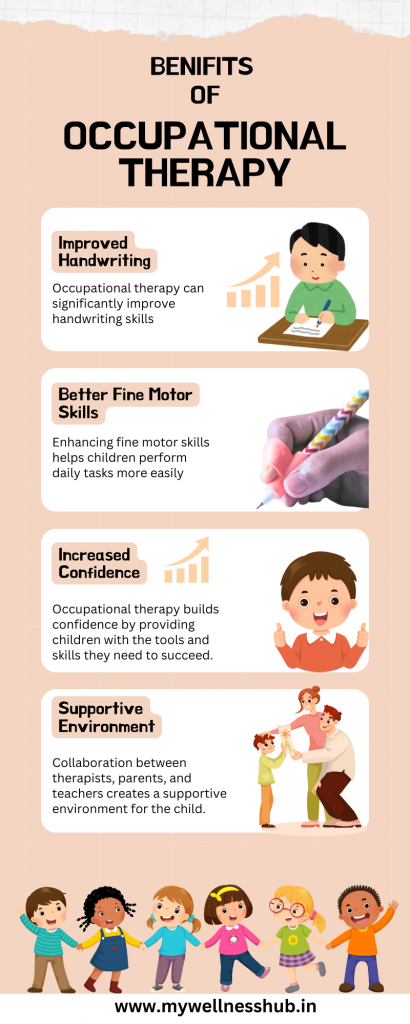
Occupational therapy offers numerous benefits for children struggling with dysgraphia. Let’s delve into how it can make a significant difference in your child’s life:
1. Improved Handwriting
One of the most noticeable benefits of occupational therapy is improved handwriting. Therapists work with children to enhance their fine motor skills, making it easier for them to write legibly and comfortably. Using tools like pencil grips and special lined paper, children can develop better control over their writing instruments. As their handwriting improves, so does their ability to communicate effectively through writing.
2. Better Fine Motor Skills
Fine motor skills are crucial for many daily activities, and occupational therapy focuses on strengthening these skills. Through various exercises and activities, children learn to control their hand movements more precisely. This not only helps with writing but also with tasks like buttoning clothes, using scissors, and other activities requiring hand-eye coordination. Enhanced fine motor skills contribute to overall better performance in both academic and personal tasks.
3. Increased Confidence
Struggling with writing can significantly impact a child’s self-esteem. Occupational therapy helps build confidence by providing children with the tools and strategies they need to succeed. As they see their handwriting improve and find writing tasks less daunting, their confidence grows. This positive reinforcement encourages them to tackle other challenges with a more optimistic outlook.
4. Supportive Environment
Occupational therapy also creates a supportive environment for children with dysgraphia. Therapists work closely with parents and teachers to ensure that the strategies learned during therapy are applied consistently at home and school. This collaborative approach provides a network of support, making the child feel understood and encouraged.
5. Positive Impact on Academic and Personal Development
The benefits of occupational therapy extend beyond improved writing skills. By addressing the challenges of dysgraphia, therapy can positively impact a child’s overall academic performance. With better handwriting and increased confidence, children are more likely to participate actively in class, complete assignments on time, and enjoy learning. Additionally, the skills gained through occupational therapy help children in their personal development, enabling them to handle daily tasks more efficiently and independently.
Conclusion
To ensure your child’s success and well-being, don’t hesitate to take the next step if you suspect dysgraphia. At Wellness Hub, we’re committed to transforming challenges into achievements through expert occupational therapy. Our therapists specialize in creating supportive, personalized environments that nurture your child’s capabilities. Join the many parents who have witnessed remarkable progress in their children’s writing and confidence. Visit our website today to learn more and schedule an appointment. Let us help your child thrive and unlock their full potential. Your investment in their future starts here at Wellness Hub.
Frequently Asked Questions:
1. What is dysgraphia, and how does it affect children?
Dysgraphia is a learning disability that primarily affects a child’s writing skills. Children with dysgraphia often struggle with messy or illegible handwriting, poor spelling, and difficulties with fine motor skills. These challenges can make schoolwork and daily tasks frustrating and can impact a child’s confidence and academic performance.
2. How can I tell if my child has dysgraphia?
Common signs of dysgraphia include:
- Poor handwriting
- Difficulty forming letters correctly
- Inconsistent spelling
- Avoidance of writing tasks
- Trouble with fine motor skills, such as using scissors or tying shoes
If you notice these symptoms, it might be helpful to consult with an occupational therapist for a proper assessment.
3. What role does occupational therapy play in treating dysgraphia?
Occupational therapy helps children with dysgraphia by:
- Improving fine motor skills needed for writing
- Using sensory integration techniques to address writing challenges
- Introducing adaptive tools and technology to support writing tasks
- Modifying the environment to create a supportive setting for writing
- Breaking down writing tasks into manageable steps to reduce overwhelm
4. What benefits can my child gain from occupational therapy for dysgraphia?
Occupational therapy can provide several benefits, including:
- Improved handwriting
- Enhanced fine motor skills
- Increased confidence and self-esteem
- A supportive environment both at home and school
- Positive impact on overall academic and personal development
5. How do occupational therapists create a treatment plan for dysgraphia?
Occupational therapists start with a comprehensive assessment of the child’s specific challenges. They then develop an individualized treatment plan tailored to the child’s needs, focusing on improving fine motor skills, using adaptive tools, and modifying the environment to support better writing.
6. Can occupational therapy help with other related conditions like dyslexia and dyspraxia?
Yes, occupational therapy can also help children with related conditions such as dyslexia and dyspraxia. While dyslexia primarily affects reading skills and dyspraxia affects motor coordination, occupational therapy can address the fine motor and sensory integration issues common to these conditions, helping children develop better overall skills.
7. How can parents and teachers support a child with dysgraphia at home and in school?
Parents and teachers can support a child with dysgraphia by:
- Collaborating with occupational therapists to implement strategies learned in therapy
- Providing consistent encouragement and positive reinforcement
- Creating a supportive and distraction-free environment for writing tasks
- Using adaptive tools and technology recommended by therapists
8. Where can I find more information and support for my dysgraphic child?
For more information and support, Our expert therapists are dedicated to helping children with dysgraphia and other learning disabilities. You can find resources, book appointments, and explore the range of services we offer to support your child’s development.
About Author
Prapoorna Mangalampalli
M.Sc., M.A., (Dual Masters in Psychology and Senior Content Developer) – Counselor (6+ years of experience)
Prapoorna is a skilled counselor with dual Master’s degrees in Psychology and English. With more than six years of professional experience, she specializes in providing various types of counseling, including online Therapy , Marital , Relationship, child, family, and career counseling. Prapoorna is part of the Wellness Hub team, where she contributes significantly to their mission. She values a team-based approach and is committed to innovation, compassion, and the success of her clients. Her diverse educational background and extensive experience enable her to offer insightful and effective counseling services that positively impact individuals and families.
Book your Free Consultation Today
Parent/Caregiver Info:
Client’s Details:
* Error Message

